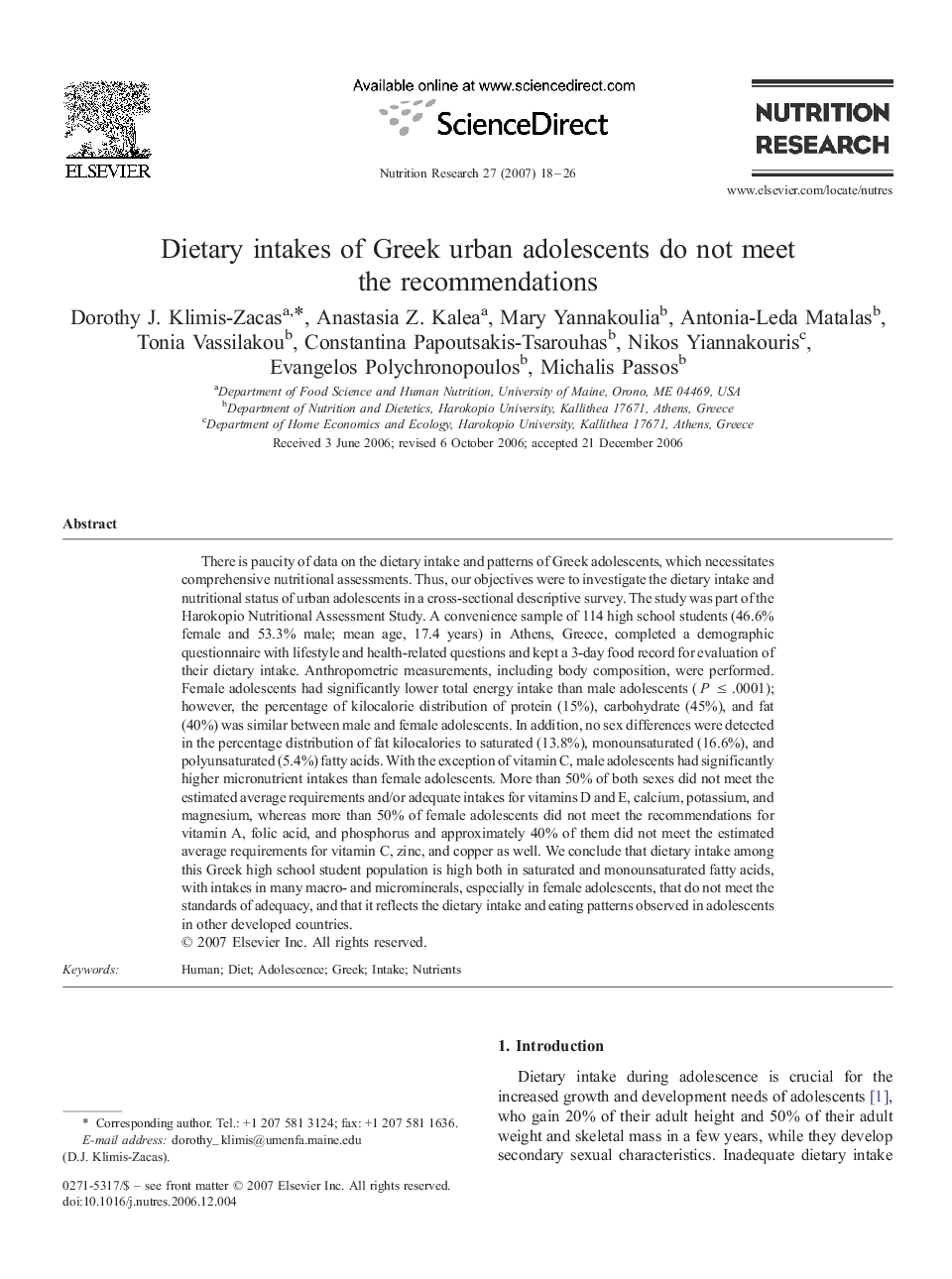| Article ID | Journal | Published Year | Pages | File Type |
|---|---|---|---|---|
| 2809925 | Nutrition Research | 2007 | 9 Pages |
There is paucity of data on the dietary intake and patterns of Greek adolescents, which necessitates comprehensive nutritional assessments. Thus, our objectives were to investigate the dietary intake and nutritional status of urban adolescents in a cross-sectional descriptive survey. The study was part of the Harokopio Nutritional Assessment Study. A convenience sample of 114 high school students (46.6% female and 53.3% male; mean age, 17.4 years) in Athens, Greece, completed a demographic questionnaire with lifestyle and health-related questions and kept a 3-day food record for evaluation of their dietary intake. Anthropometric measurements, including body composition, were performed. Female adolescents had significantly lower total energy intake than male adolescents (P ≤ .0001); however, the percentage of kilocalorie distribution of protein (15%), carbohydrate (45%), and fat (40%) was similar between male and female adolescents. In addition, no sex differences were detected in the percentage distribution of fat kilocalories to saturated (13.8%), monounsaturated (16.6%), and polyunsaturated (5.4%) fatty acids. With the exception of vitamin C, male adolescents had significantly higher micronutrient intakes than female adolescents. More than 50% of both sexes did not meet the estimated average requirements and/or adequate intakes for vitamins D and E, calcium, potassium, and magnesium, whereas more than 50% of female adolescents did not meet the recommendations for vitamin A, folic acid, and phosphorus and approximately 40% of them did not meet the estimated average requirements for vitamin C, zinc, and copper as well. We conclude that dietary intake among this Greek high school student population is high both in saturated and monounsaturated fatty acids, with intakes in many macro- and microminerals, especially in female adolescents, that do not meet the standards of adequacy, and that it reflects the dietary intake and eating patterns observed in adolescents in other developed countries.
